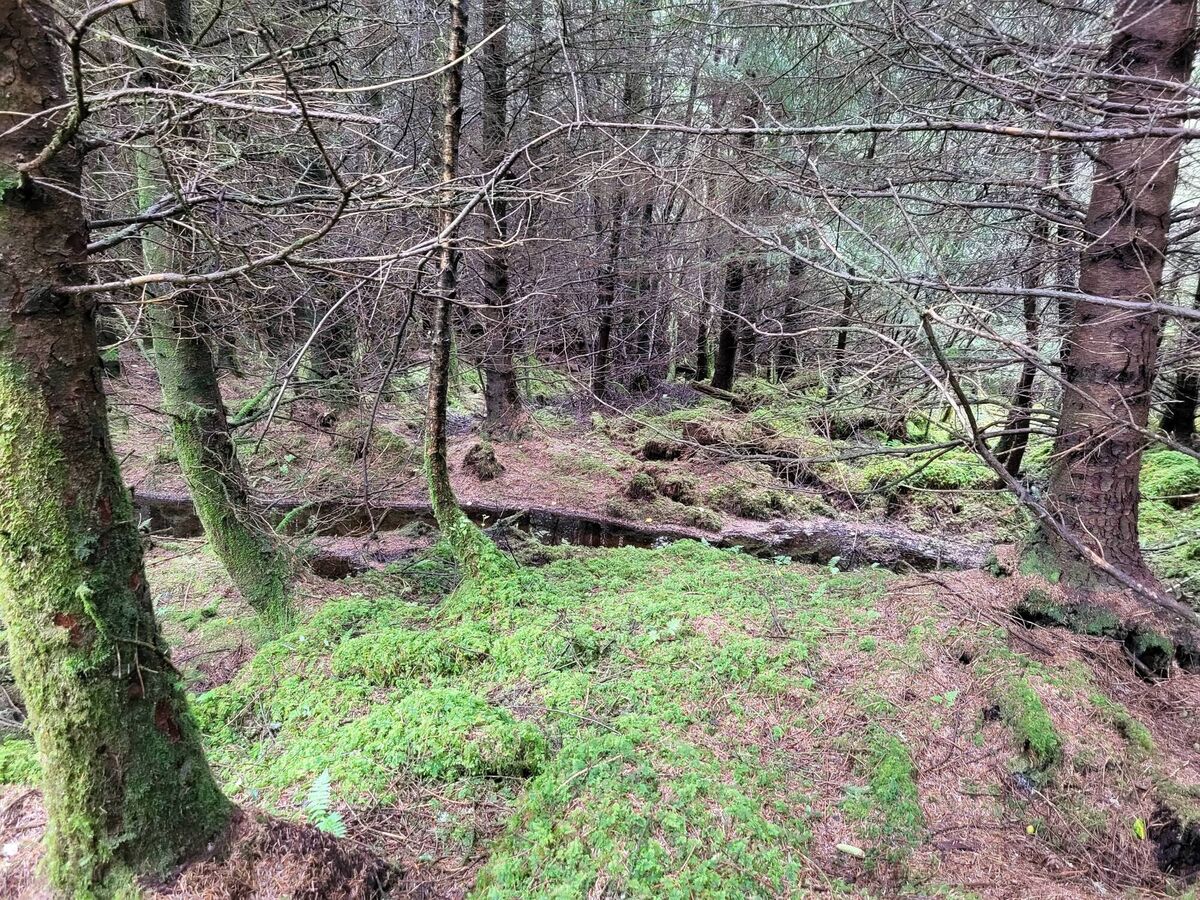Irish forestry leaves little for nature — the whole sector needs to change

Irish forestry leaves little for nature. Pictures: Pádraic Fogarty
It is rare for an industry leader to admit that their business model is fundamentally unsustainable.
While environmentalists have long decried Ireland’s forestry model as an assault on nature, it was perhaps surprising for the director of Forest Industries Ireland, Mark McCauley, to declare last year that “we’re going nowhere on forestry”. The reason he explained, was that there are now too many restrictions on where trees can be planted.
In particular, a prohibition on planting trees on peatland leaves nowhere for new plantations of conifers to go, given that farmers do not want to put plantations on valuable grassland (an admission in itself that forestry cannot compete economically or socially with farming).
The forestry industry’s concerns were regurgitated last month by the minister in charge of forestry, Michael Healy-Rae, who told the Seanad that “I and my officials in the Department will look at planting more peatland”.
The admission by the industry and its minister are a concession that forestry as it has been practiced is not, and never has been, sustainable from an environmental perspective. As if to underline the point, Healy-Rae added that “if the rules that are applied even today were applied before, we would not have any forestry or timber.”
Trees will grow nearly everywhere in Ireland and pollen analysis shows that at one point in our history, natural forests covered 80% of the land. The only places where trees won’t grow are where the water table is too high or the ground is permanently inundated, such as lakes. This includes bogs, particularly where the peat is deep and permanently saturated.
Nevertheless, trees can and do grow on peatlands. Much of the land where industrial peat extraction has taken place, particularly in the midlands, but which are now abandoned, are rapidly being recolonised with willows, birches and pines. Bog woodland, which grows in limited circumstances on intact bogs, is recognised as among our most valuable habitats.
Indeed, large, intact bogs in places like Scandinavia, are not treeless places. Rather, the trees are sparsely located and often don’t grow particularly well. So forests on peatlands, particularly where they are naturally established, are not always a bad thing. Even the (recently abandoned) Coillte Nature arm of the State-forester had an initiative to create new native forests on peatlands.
However, when the industry or the current minister talk about forests they are not referring to natural forests or places where wild trees can grow and flourish under their own steam. Rather, they are referring to commercial timber plantations, which in Ireland have been monocultures of alien conifers, particularly Sitka spruce or lodgepole pines. These plantations are never good for nature but when they are on peatlands the negative impacts are supercharged.

This is because in order for these trees to grow commercially the peat needs to be drained, and drained peatlands are a significant source of greenhouse gases.
While trees are excellent at storing carbon, it is a little appreciated fact that the vast majority of the carbon in a forest, up to 80%, is stored not in the wood but in the soil. When peatlands soils are drained they dry out and when the dry out bacteria starts to decompose the organic matter which, in turn, releases the carbon into the atmosphere. Documents from the Department of Agriculture are clear about this, stating that peat soils “emit carbon when disturbed and afforestation on these soils can be a net source of CO2.”
Drainage of peatland has also resulted in damage to sensitive water courses and, least it be overlooked, bogs and peatlands have a unique biodiversity that is cleared away when conifers are planted.
This has left us with what is referred to in the industry as the ‘legacy problem’, where vast areas of bog, particularly in the west of Ireland were drained and planted with conifers from the 1950s. Here, not only was the local ecology destroyed but the trees hardly grew, leaving a standing crop of emaciated evergreens that are a liability to us all.
All of this has been known for a very long time and, because forestry is in receipt of substantial quantities of taxpayer money, the European Commission must approve our forestry programme. The Commission has long expressed concerns about Ireland’s forestry model and back in 2015, told the government that “the inappropriate afforestation of sensitive habitats such as peat lands and wetlands will be avoided”.
Indeed, delays in the approval of the latest forestry programme in 2023 were in part due to this message not fully percolating in the department. Hence, we now have rules that prohibit afforestation on peat soil that is greater than 30 centimetres in depth.
The cries from the industry and the minister that this has ground forestry to a halt is an admission of the long-standing failures in Ireland’s forestry model. Yet rather than finding a new model the effort is being put into its perpetuation, something they both must know is doomed to failure given the need for EC approval for any change.
Forestry is a relatively small business, entirely dependent on taxpayers’ money and with an outsized environmental footprint. When the cost of the ecological damage is subtracted from the value of the timber, any calculation would surely conclude that it is a liability on the State. Minister Healy-Rae should acknowledge this and use his time to develop a new model — one that doesn’t depend on destroying our environment to turn a buck.





